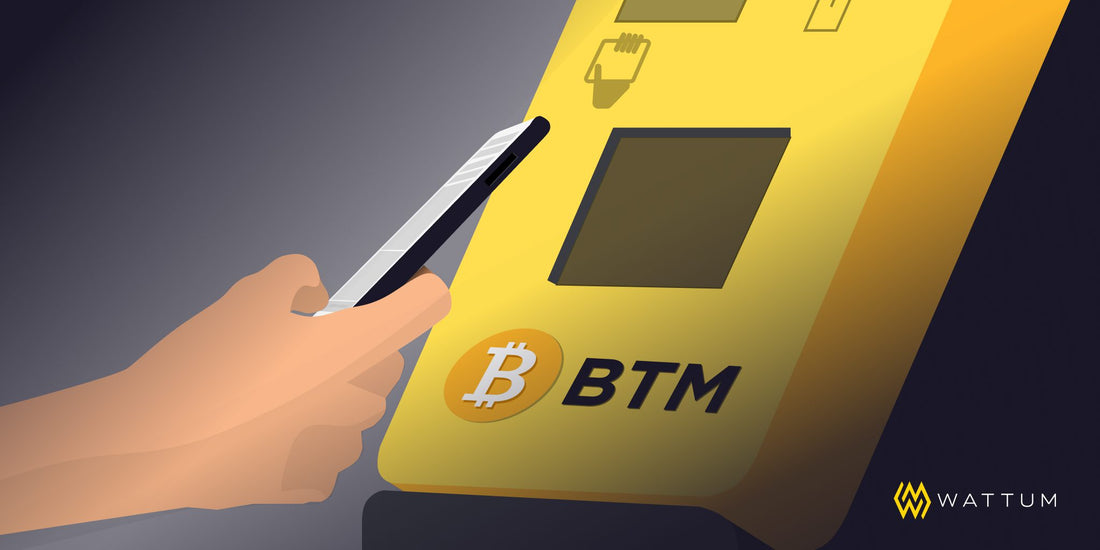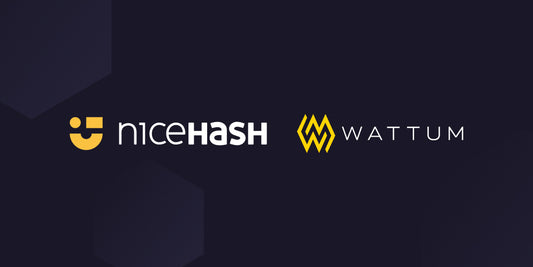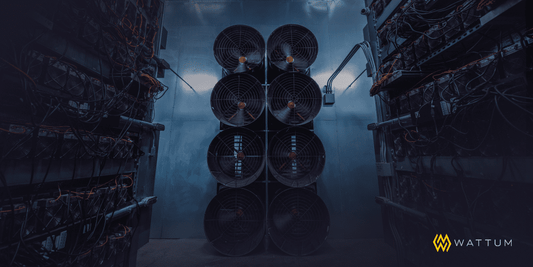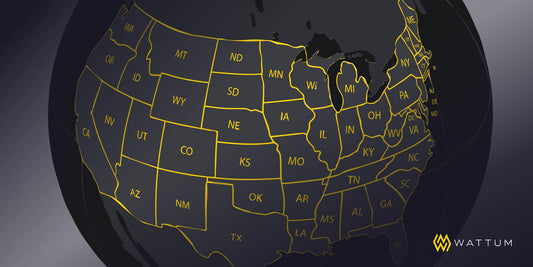You’ve likely seen Bitcoin ATMs around more and more lately. At the grocery store, at the gas station, at the airport, at the mall. Have they been there all along, or are they only now popping up, seemingly everywhere? Is it their actual presence that’s spreading, or just your awareness of them? Well, it’s a little bit of both.
Bitcoin ATMs have actually been around for a while – the first in the world was installed in Canada in 2013, with the first in the US following in 2014 – but their prevalence has particularly exploded as of late. There are somewhere between 38,000 and 50,000 Bitcoin ATMs across the world by now (estimates vary from one source to the next) with almost 90% of them in the US and over 95% of them in North America. The total number of Bitcoin ATMs worldwide has increased by more than 500% over the last two and a half years alone, just since the beginning of the COVID-19 pandemic. A recent report forecasted the global crypto ATM market to grow by more than 1,000% over the next five years, from around $46 million to as much as $472 million.
So, you set out one day to use one, partly out of curiosity and partly because you’re never opposed to stacking a few more satoshis. You visit the same Bitcoin ATM that you’ve walked past every week for the last couple of months, and conduct a transaction for the very first time.
Requirements
You’ve decided to visit a Bitcoin ATM. To ensure that your Bitcoin ATM transaction goes smoothly, there are a few things you’ll need going in. First, you’ll need a Bitcoin ATM. Sites like Coin ATM Radar use location services to help you find the Bitcoin ATM nearest to you, if there is one in your area. Beyond that, while there are tens of thousands of Bitcoin ATMs out there, operated by hundreds of different companies, pretty much all of them share a couple of basic requirements that you’ll need to fulfill in order to transact: a Bitcoin wallet address, and a form of identity verification.
Most Bitcoin ATMs simply allow you to either scan your wallet’s QR code or manually type in the wallet address. Many also offer specific instructions on how to download an app, for those without a wallet. Often, a Bitcoin ATM will allow you to link to or enter an exchange address as well – and in some cases, the ATM can even print you a “paper wallet” for transfer to a personal wallet later on, though this option isn’t quite as common. Identity verification, meanwhile, can range from a phone number for smaller transactions to a driver’s license for larger ones, and most Bitcoin ATMs will also prompt you to create an account at the start of the transaction.
As far as the exact terms and conditions go, it depends on the specific ATM – or “BTM,” as they’re also called – and your specific country or region. Some machines allow for both buying and selling (bi-directional), but many just buying (unidirectional). Some allow for the transacting of altcoins, but many just Bitcoin. Some accept cash, some debit, and some both. Transaction fees vary from as “low” as 7% for some to as high as 30% or more for others, and daily transaction limits range from $3,000 to $15,000 for most BTMs. A purchase usually takes around ten minutes to hit your wallet, although it can sometimes take as long as an hour to verify.
The Process
You’ve arrived at your BTM of choice. You’ll probably find that the process of buying or selling BTC via ATM employs similar software, and even feels similar to the process of using a fiat ATM, though there are a few important distinctions.
In fact, the term “Bitcoin ATM” is perhaps even slightly misleading, since buying Bitcoin through an ATM involves not merely withdrawing or depositing your dollars, but rather converting your dollars into satoshis. Simply put, using a Bitcoin ATM allows you to purchase Bitcoin, and then send it directly to your wallet. And while you likely tend to associate using a fiat ATM with walking away with cash in your pocket, after using a Bitcoin ATM, you’re instead walking away with Bitcoin in your digital wallet.
Now, you’re about to make your first transaction. Though it more or less unfolds as a singular process, buying Bitcoin through a BTM ends up involving a small handful of distinct steps:
- First, you enter your phone number and/or email address, and, since this is a smaller transaction, you verify your identity with a security code sent via text.
- Next, you scan your wallet QR code or else manually enter your wallet address.
- Then, you insert your fiat currency, whether in the form of cash or your debit card.
- Lastly, you confirm and complete your transaction, and wait for your satoshis to transfer.
And that’s pretty much it. Much like that of any fiat ATM, your Bitcoin ATM transaction itself only takes you a few minutes to complete, and in some cases, it might even provide you the quickest, most convenient, and most accessible way to acquire some Bitcoin. But there are also plenty of reasons why Bitcoin mining still offers the optimal way to accumulate, and Bitcoin ATMs offer a perfect illustration of a few of them.
Pros and Cons
You’ve completed your transaction, but will you be making any others in the future? While BTMs do indeed present a convenient way for you to buy or sell Bitcoin, like anything else they also present a mixture of upsides and downsides. Many of the upsides simply mirror those of fiat ATMs – namely convenience and accessibility. Like fiat ATMs, for example, Bitcoin ATMs provide financial access outside of traditional banking hours, and in locations where there may not even be any bank branches. In fact, Bitcoin ATMs provide financial access outside of traditional banking in general, if you don’t have or want a bank account.
One of the main downsides to buying Bitcoin through an ATM, however, is the extremely high transaction fees, which can often result in a price point thousands of dollars above the current price of Bitcoin. Bitcoin ATM transaction fees tend to average around 10–11%, depending on the operator, but can also run as high as 30% or more. Another drawback is low transaction limits, so Bitcoin ATMs aren’t a viable option for larger purchases. And yet another issue is the perceived lack of recourse should anything go wrong, though customer service appears to be improving: you may even receive a call from the Bitcoin ATM operator within a few hours as a follow-up if your BTM visit timed out.
No Substitute for Mining
You’re back on your way now, and your transaction has already cleared. All in all, you come away from your BTM visit thinking that, although they offer no true substitute for mining Bitcoin directly, this is still just the beginning for Bitcoin ATMs, and you’ll only continue seeing more and more of them. Although Bitcoin ATM installations have slowed a bit this year due to the Bitcoin price drop, the total number of Bitcoin ATMs worldwide has nonetheless approximately doubled over the last year alone, after nearly tripling across the year before it. In these terms, the ongoing spread of Bitcoin ATMs serves as both a symptom and a cause of Bitcoin’s increasing use and mass adoption, since Bitcoin ATMs offer benefits for the Bitcoin ecosystem larger than simply personal convenience, and will continue to play a vital role in Bitcoin’s adoption curve moving forward – and its functional use as a global currency.
Though we’re Bitcoin mining experts, Wattum sees the ongoing expansion of Bitcoin ATMs as a positive trend for Bitcoiners everywhere and the Bitcoin ecosystem as a whole. While Bitcoin ATMs offer users convenience and accessibility, the tradeoff amounts to buying Bitcoin well above the current market price, when factoring in transaction fees. Mining, meanwhile, amounts to buying Bitcoin at the price of the hardware itself, and offers the ability to mine and accumulate Bitcoin well below its current market price. Reach out to a Wattum sales representative today to learn more about how to launch or expand your Bitcoin mining operations.



